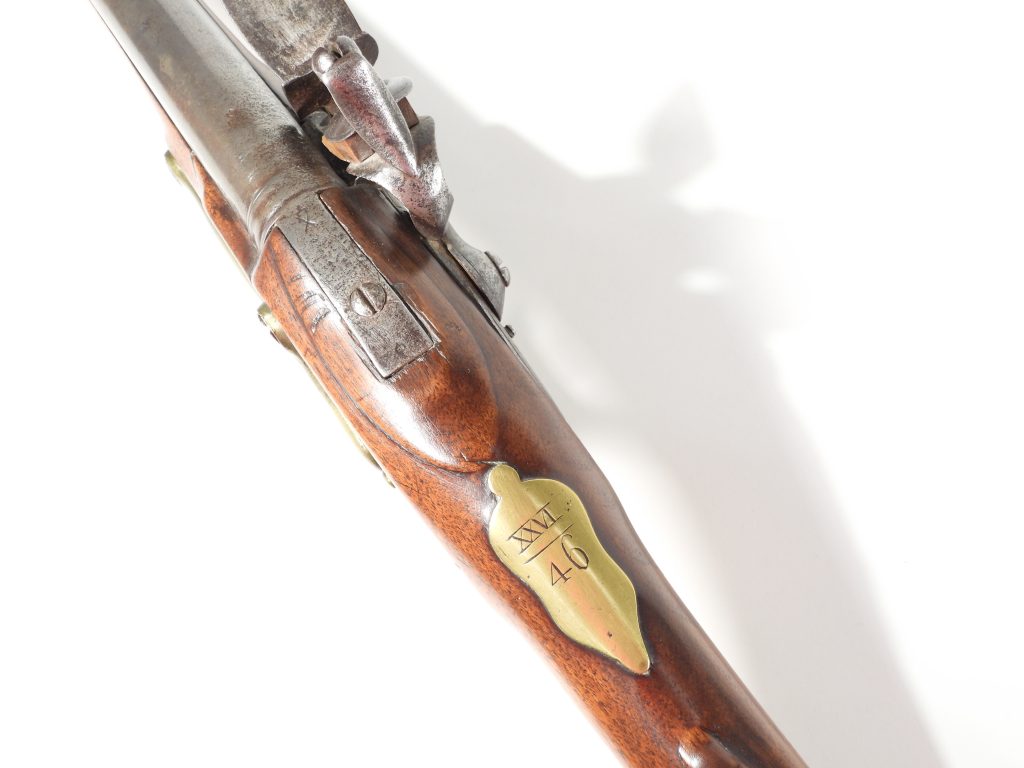It’s no secret that I’m a fan of British land pattern muskets from the 1730s to the 1770s. The look and feel of those sturdy guns is what makes them very attractive to me. These guns have such attractive lines and one can see why they were in service with the British army as well as Provincial use for such a very long time before being replaced. They are a beefy gun and although a bit heavy they feel good in your hands. I know I have mentioned this before, but the Pattern 1742 is one of my absolute favorite weapons of the Revolutionary period. I had one a few months ago that had been cut down 4 inches to make it the same length as a Pattern 1769 and probably American-marked. Just before the holidays I picked up another, but this one hasn’t been cut down or really messed with at all.

The stock is a beautiful dark English walnut with an added sheet brass nose cap. An initial, possibly from a previous owner is carved onto the right side of the butt near the storekeeper’s stamp. The brass fittings are all the standard type used on all the others of this pattern, but what makes this gun extra special are the numbers engraved on the brass wrist plate. British “rack numbers” are typically a number or letter over another number, like “2/21” for the second company, 21st man. On this gun it has Roman numerals “XXVI/46” which are believed to be an American method of identifying the gun to it’s company and man. There are a few American/Provincial gun rolls from the period that survive that show this marking system.
The Pattern 1740 lock is marked “FARMER/1746” on the tail of the lock plate, with a crown over “GR” and a stamped crown and broad arrow government ownership mark. It shows some wear from use, but it should after seeing some heavy service during the French and Indian War as well as the American Revolution. It has a replacement front brass ramrod pipe and an iron American-made ramrod, the wooden one probably replaced for a sturdier rod not as prone to breaking.
This gun has also been published in two great books. The first, The Brown Bess: An Identification Guide and Illustrated Study of Britain’s Most Famous Musket, By Erik Goldstein and Stuart Mowbray, as well as Of Sorts For Provincials: American Weapons of the French and Indian Wars, by Jim Mullins. Both books have great images and details of this gun as well as many others and are fantastic references.





